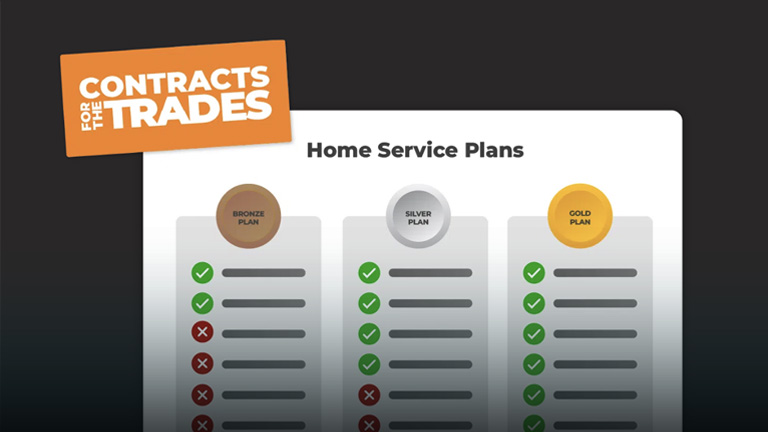5 Proven Ways to Manage a Successful Sales Team
March 1, 2023 | Read: 8 minutes

Effective sales team management is essential for any business that wants to remain competitive in today’s market. It requires careful planning, leadership, and a clear understanding of the skills and resources needed to succeed.
By implementing the right strategies and techniques, you can ensure that your sales team performs at its highest potential.
In this article, we will discuss five proven ways to manage a successful sales team.
These include:
- setting objectives,
- providing training opportunities,
- creating an environment of collaboration,
- encouraging accountability amongst a team, and
- utilising performance metrics.
With these tips, you can create an effective strategy for managing your sales team and yields positive results.

1. Set Objectives for Your Sales Team
The success of any sales team management strategy is intimately connected to the objectives set before the people involved. Clear goals and targets for the team provide an invaluable guide for success. They allow each member to clearly understand their responsibilities and strive towards a common goal.
Setting objectives also allows teams to measure their performance against those predetermined goals. This helps ensure that all members work towards the same result and gives the team a shared sense of purpose. It also encourages accountability among team members, as each individual is responsible for meeting their objectives while contributing to the overall group’s goals.
Objectives also give customers an understanding of what they can expect from your sales team regarding service and quality. When customers have clear expectations, they are more likely to be satisfied with the results they receive. As such, setting goals increases performance within your sales team but also helps improve customer satisfaction rates. These are essential for success in any market.
For objectives to be effective, however, they must be practical and well-defined. It’s also essential that they’re adequately communicated throughout your organisation. This will ensure that everyone involved understands exactly what is expected of them and why meeting those expectations is vital.
Additionally, objectives must be realistic; setting overly ambitious goals can lead to frustration when they cannot be met or quickly become obsolete due to changing market conditions or competition.
2. Provide Training Opportunities
Investing in the development of your sales team is essential for creating an effective, successful sales strategy for either short-term or long-term success. Training opportunities for your sales personnel can help them to reach their potential. Training will also help them to acquire new skills and knowledge, and can contribute to more positive, productive work environment.
One of the key benefits of offering sales training is that it increases the team’s effectiveness. Topics include communication strategies, developing customer relationships, understanding customer needs and motivations, presentation techniques, and product knowledge.
All these skills can help improve a salesperson’s performance while boosting customer satisfaction.
3. Create an Environment of Collaboration
Creating an environment of collaboration in a workplace can make a difference when building a successful, productive team. When employees are encouraged to work together, share ideas, and provide feedback. The result is a cohesive team that can solve problems more effectively and innovates rapidly.

An environment of collaboration starts with management setting the tone and providing clear expectations for how employees should interact with each other. This could include emphasising open communication, mutual respect, and constructive criticism.
Sales team management should also ensure to keep employees aware of company changes or updates and opportunities for growth and development. This helps to create an atmosphere where employees feel valued and respected.
In order to foster a collaborative workplace, employees must be allowed to openly express their thoughts and opinions in meetings or brainstorming sessions. Allowing people to voice their ideas without judgment or fear of criticism encourages creativity and innovation and enhances morale. It also allows for better decision-making by considering all points of view to come up with the best possible outcome for everyone involved.
Such behaviour contributes to employee well-being and reduces the chance of losing a good employee across the company, not just the sales team.
Another way to promote collaboration is through creating smaller groups within the larger team, such as project teams or task forces. This allows individuals with similar interests or skill sets to work together and exchange ideas more easily than in a larger group setting.
Additionally, these strategies enables people from different departments or roles to come together and learn from each other while also creating a sense of camaraderie amongst colleagues – something that can be beneficial for productivity levels and employee morale overall.
4. Encourage Accountability Among Team Members
When each team member is held accountable for their performance, both individually and as a group, it encourages them to take ownership of their work and strive for excellence.
This, in turn, drives motivation levels across the entire team, leading to improved morale, increased productivity, and, ultimately, higher levels of customer satisfaction.
Management must set clear targets and goals so that each team member understands what is expected of them. This could include providing guidelines on how regular meetings should be conducted or setting deadlines for tasks.
For this purpose, we recommend team managers be as specific as possible. Prepare a successful work calendar with the help of a Work Plan Template that can be easily shared across the organisation.
Providing feedback regularly is the first step toward encouraging accountability in your team. This doesn’t just mean highlighting mistakes but also praising those who excel in their roles or have done something noteworthy.
By recognising hard work and dedication from employees, management can strengthen trust between themselves and the team. At the same time, they simultaneously improve moral. These are two crucial components of any effective working environment.
Another way to encourage accountability among team members is through implementing systems that track progress over time. This could include using scorecards or having performance reviews. Establishing KPIs is also important, so specific targets can be aimed for and assess, too.
Being able to track and assess results allows managers to quickly pinpoint individuals’ strengths and weaknesses. They also also allow employees themselves to identify where they can improve their performance or play to their strengths. It also highlights achievable goals, which can help foster a sense of accomplishment and motivate them toward continued success.
5. Utilise Performance Metrics
Performance metrics such as conversion rate, average order value, and customer satisfaction scores are the metrics by which we address a strategy’s success rate. These metrics provide key insights into overall performance. Businesses can make smart, data-driven decisions to drive the business forward.
Using performance metrics can help managers spot potential opportunities or trends that could benefit the company. For instance, a business with a high conversion rate might suggest that its website or marketing efforts are effective.
Alternatively, if they have a low average order value, it may need to review its product prices or promotional strategies to increase sales. By keeping an eye on these performance metrics, businesses can quickly adjust their operations to stay ahead of the competition and maintain profitability.
Performance metrics also allow businesses to benchmark against competitors and industry standards.
This helps them understand how their own performance stacks up against other companies in the same sector, highlighting strengths and weaknesses that may need to be addressed.
Looking at external benchmarks also allows them to set realistic goals based on the current market environment.
Selling is about more than just financial KPIs:
Customer satisfaction scores are another important performance metric to obtain valuable insights into how customers perceive your products or services. When customers take the time out of their day to leave feedback (be it positive or negative), this can be used to indicate how satisfied they were with your company’s offerings. You can adapt based on the details they provide.
This feedback can inform future product development cycles and changes made within customer service protocols for customers to receive a better experience when dealing with your business going forward.
Of course, when using performance metrics such as conversion rate, average order value, and customer satisfaction scores, it’s vital that businesses take into account many different factors, including external economic conditions and seasonality fluctuations that could distort results.
By considering all these variables before making data-driven decisions, businesses can reduce uncertainty while simultaneously improving overall chances of success in the long run.
Get more out your sales team:
Managing a successful sales team requires careful consideration of several vital elements.
From setting clear goals and objectives to fostering an environment that encourages accountability, businesses must take the necessary steps in order to ensure their teams remain motivated and on track toward achieving desired results.
Utilising performance metrics such as conversion rate, average order value, and customer satisfaction scores is also essential for gauging overall success. Benchmarking against industry standards can help inform future plans or strategies.
By following these five proven methods outlined above, managers will be well-positioned to lead their teams into even greater levels of accomplishment – driving continued growth for the business and its employees!
For more guidance on sales team management, be sure to download your free sales strategy guide: Stop Quoting, Start Selling.









